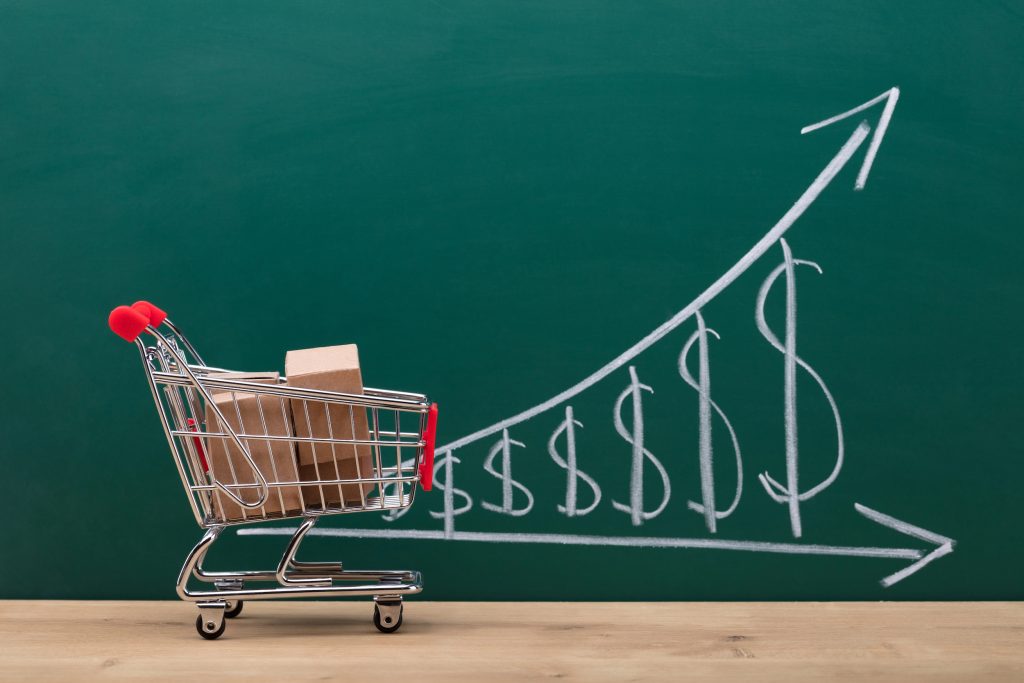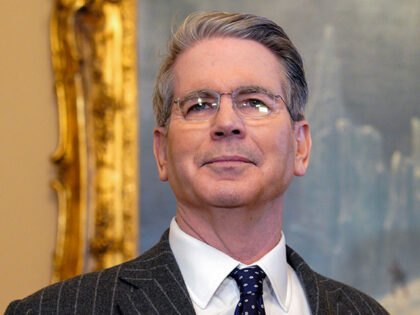from The Morgan Report
Argentina Logs Lowest Inflation in Five Years
by Christian K. Caruzo
Breitbart.com
 The National Institute of Statistics and Census of Argentina (INDEC) announced Thursday that the country’s inflation rate in January was 2.2 percent — the lowest in five years.
The National Institute of Statistics and Census of Argentina (INDEC) announced Thursday that the country’s inflation rate in January was 2.2 percent — the lowest in five years.
Argentina marked the first month of 2025 with its lowest inflation rate since July 2020 and the month with the lowest inflation under the administration of President Javier Milei to date, dropping 0.5 percent from December’s 2.7 percent.
The Argentine newspaper La Nación highlighted the slowdown of inflation during January and explained that the month tends to be one with “seasonally high” inflation as Argentina, a country located in the Southern Hemisphere, is currently going through summer. January also marked the fourth month in a row in which Argentina measured an inflation rate under three percent since it dropped down to 2.7 percent in October.
Denny’s Set to Shutter Nearly 30 Locations Amid Inflation, Bird Flu
by Fiona McLoughlin
DailyCaller.com
 The popular restaurant chain Denny’s is set to close nearly 30 locations amid concerns regarding inflation and the bird flu.
The popular restaurant chain Denny’s is set to close nearly 30 locations amid concerns regarding inflation and the bird flu.
Robert Verostek, the company’s chief financial officer, said in a call with investors that the chain may close as many as 90 restaurants this year, the New York Post (NYP) reported Friday. Executives said inflation is to blame for the pullback in sales. Inflation rose in January as the Consumer Price Index went up to 3%, the Bureau of Labor Statistics announced Wednesday.
“In any mature brand, when restaurants have been open that long, it is natural that trade areas can shift over time,” Kelli Valade, CEO of Denny’s, said during a call. “Accelerating the closure of lower-volume restaurants will improve franchisee cash flow and allow them to reinvest into traffic-driving initiatives like our tested and proven remodel program.”
The Fed Has Stopped Pretending That Price Inflation is Going Away
by Ryan McMaken
Mises.org
 At its September 2024 meeting, the Fed’s FOMC cut the target federal funds rate by a historically large 50 basis points and then justified this cut on the grounds that “The Committee has gained greater confidence that inflation is moving sustainably toward 2 percent, and judges that the risks to achieving its employment and inflation goals are roughly in balance.”
At its September 2024 meeting, the Fed’s FOMC cut the target federal funds rate by a historically large 50 basis points and then justified this cut on the grounds that “The Committee has gained greater confidence that inflation is moving sustainably toward 2 percent, and judges that the risks to achieving its employment and inflation goals are roughly in balance.”
The FOMC again cut the target rate in November and then again in December. Each time, the FOMC’s official statement said something to the effect of “[price] inflation is headed to two percent. Specifically, the November statement said “[Price inflation] has made progress toward the Committee’s 2 percent objective.” The December statement said exactly the same thing.
It remains unclear what motivated the FOMC to slice the target rate so drastically in September. Was it a cynical political ploy to stimulate the economy right before an election? Or was the Fed spooked by weak economic data? We don’t know, and the Fed is a secretive organization.
Peter Schiff: They Completely Missed the Point On Inflation
by Peter Schiff
Schiff Sovereign

Once again, the media missed the real story.
The Wall Street Journal and New York Times, among many others, reported that consumer prices, as measured by the Consumer Price Index, rose 3% year-over-year.
And everybody seems to accept that story, that annual inflation is now up to 3%. This is a small uptick from the annual rate that was reported in December, which was 2.9%.
Federal Reserve Chairman Jerome Powell even told Congress yesterday that we’re “close” to the 2% inflation target, “but we’re not quite there yet,” as if things were moving in the right direction. And lawmakers just nodded along. No one challenges the Fed Chairman. Not the politicians. Not the media.
The Growing Risk of Stagflation Bodes Well For Gold & Silver
by Jesse Colombo
Silver Seek
 U.S. inflation expectations have surged over the past few months, and this has been a bullish driver for gold and silver.
U.S. inflation expectations have surged over the past few months, and this has been a bullish driver for gold and silver.
Yesterday, the U.S. Consumer Price Index came in hotter than expected, reinforcing those inflation concerns and raising the specter of stagflation as economic growth slows and layoffs increase.
While these developments are troubling for the broader economy, they create a highly favorable environment for precious metals, which I will explore in this article.
Yesterday’s report showed that the Consumer Price Index (CPI) rose at an annual rate of 3.0% in January, surpassing the expected 2.9%. Meanwhile, the core CPI, which excludes volatile food and energy prices, climbed 3.3% annually—higher than the anticipated 3.1%.
Trump May Have to Grapple with Returning Inflation
Cutting government spending and calling off the trade war would be steps in the right direction.
by J.D. Tuccille
Reason.com
 More than one issue boosted Donald Trump ahead of main rival Kamala Harris and back into the White House, but inflation was key among them. A federal spending spree diminished the purchasing power of the dollar and sent prices higher, inducing sticker shock among Americans that influenced their choices on Election Day. Now we’re seeing indications that inflation is back, and the new administration will have to live up to promises to bring the cost of living under control.
More than one issue boosted Donald Trump ahead of main rival Kamala Harris and back into the White House, but inflation was key among them. A federal spending spree diminished the purchasing power of the dollar and sent prices higher, inducing sticker shock among Americans that influenced their choices on Election Day. Now we’re seeing indications that inflation is back, and the new administration will have to live up to promises to bring the cost of living under control.
Prices Rise Faster Than Expected
This week, the Consumer Price Index (CPI) came in higher than expected. “The all items index rose 3.0 percent for the 12 months ending January, after rising 2.9 percent over the 12 months ending December,” according to the press release from the Bureau of Labor Statistics.
PPI Inflation Accelerates to +3.5% Year-Over-Year, Worst in Two Years, Driven by Services Amid Massive Up-Revision of Services Inflation
by Wolf Richter
Wolf Street
 Inflation is festering and accelerating in services (two-thirds of overall PPI), not in goods.
Inflation is festering and accelerating in services (two-thirds of overall PPI), not in goods.
As has been the case for many months, today’s Producer Price Index for January included big up-revisions of the prior month, driven by a whopper up-revision for services which account for two-thirds of the overall PPI. On top of these upwardly revised December figures, the PPI rose further in January.
In January, the overall PPI accelerated to an increase of 3.51% year-over-year, the worst increase since February 2023, following a persistent zigzag line higher from the low point of near 0% in June 2023, driven largely by the services PPI.
Bessent: Any Price Increase From Tariffs Would Be ‘Slight,’ ‘Transitory,’ May Not Happen and Inflation Will Fall Overall
by Ian Hanchett
Breitbart.com
 On Thursday’s broadcast of the Fox News Channel’s “Ingraham Angle,” Treasury Secretary Scott Bessent stated that he isn’t sure tariffs will cause prices to rise because a large amount will be absorbed by both currency and the foreign producers, “But if they do, we could see a one-time, slight increase, and it would be very slight,” and “The ultimate transitory” and inflation will fall on the whole due to other policies.
On Thursday’s broadcast of the Fox News Channel’s “Ingraham Angle,” Treasury Secretary Scott Bessent stated that he isn’t sure tariffs will cause prices to rise because a large amount will be absorbed by both currency and the foreign producers, “But if they do, we could see a one-time, slight increase, and it would be very slight,” and “The ultimate transitory” and inflation will fall on the whole due to other policies.
Host Laura Ingraham asked, “Now, the usual suspects are asking why won’t the tariffs, if they’re raised, create inflation, and to that you say?”
Bessent answered, “Well, Laura, during the great inflation of ’22, ’23, all we heard was that it was transitory. The ultimate transitory, the hit is, if prices go up, and I’m not sure they will, because a huge amount is absorbed by the currency, a big amount is absorbed by the foreign producer.
CPI Rises for Fourth Straight Month
by Mike Maharrey
GoldSeek
 It’s getting harder and harder to pretend the inflation problem isn’t a problem.
It’s getting harder and harder to pretend the inflation problem isn’t a problem.
Last month, the markets and the mainstream media threw a party when the CPI data came in “cooler than expected.” CNBC led with this rosy summary. “U.S. stocks popped on Wednesday for their best day since November, on the back of the cooler-than-expected inflation reading.”
However, the actual CPI data told a different story. It was the same narrative we’d seen for several months – the inflation monster slithering back out from under the bed.
And the January inflation data was even more damning.
White House: Inflation Numbers Show Biden Administration ‘Left Us with a Mess’
by Nick Gilbertson
Breitbart.com
 WASHINGTON – White House press secretary Karoline Leavitt said Wednesday that January’s inflation numbers show the Biden administration left “a mess” for the Trump administration to handle.
WASHINGTON – White House press secretary Karoline Leavitt said Wednesday that January’s inflation numbers show the Biden administration left “a mess” for the Trump administration to handle.
Leavitt spoke during a press briefing in the afternoon after figures from the Department of Labor showed the consumer price index (CPI) increased much higher than expected. It climbed 0.5 percent from December into January, and consumer prices are up three percent compared to January 2024.
“On the inflation point, we did receive those numbers, and they were worse than expected, which tells us that the Biden administration indeed left us with a mess to deal with,” Leavitt said.
“It’s far worse than I think anybody anticipated because, unfortunately, the previous administration was not transparent in where the economy truly was,” she added.
